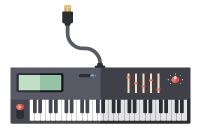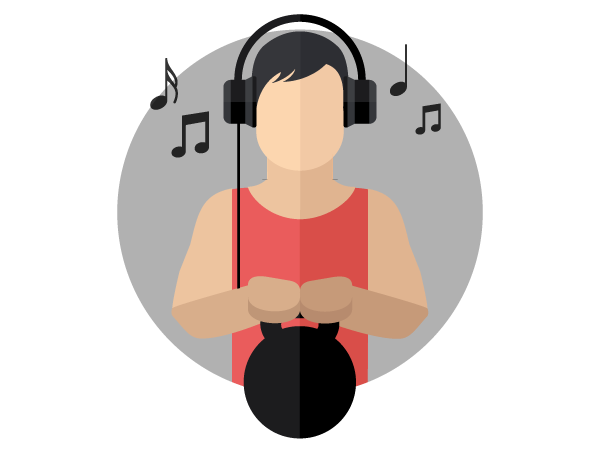How to Practice Sight-Singing
What is Sight-Singing?
Sight-Singing (aka prima-vista) is the ability to see written music notation and sing the written music back as sound in real-time. It’s a skill coveted the world over by musicians, composers, conductors, producers, and arrangers.
Many of the world’s greatest tunes were recorded live in just single takes, by highly skilled session musicians seeing the music for the very first time, moments before the tape recorder was running. These days, the music business and the way we practice musical creation as a whole are very different. However, the skill of Sight-Singing is still a worthwhile pursuit for anyone interested in expanding the boundaries of their technique, musicality, and even neuroplasticity!
The Benefits of Learning How to Sight-Sing
Sight-Singing isn’t solely an exercise to get better at reading back manuscripts or scores, it helps improve our overall musical ability and technique. Sight-singing aids in improving overall pitch accuracy, audiation (using your “inner ear” to ideate and quickly reproduce musical ideas with or without an instrument), and rhythmic ability. Working with musical scores is also something of a "lost art" and one that will help you to better understand overall dynamics, harmonic structure, cadences, and rhythms.
Being able to Sight-sing allows you to write, record, or produce music with greater flexibility and efficiency, turning tasks that might have taken hours into tasks that will take minutes or seconds. Whether it’s transposing an idea, pitching a sample, or bending a MIDI instrument, the ability to connect all areas of musical expression (written and otherwise) into one cohesive experience is nothing short of amazing.
How to Learn Sight-Singing?
Sight-Singing does not require perfect pitch in any way. The key to becoming a strong sight-singer is the ability to sing intervals, relative to one another, as opposed to singing individual notes or having “perfect pitch”. The idea is that once you have the tonic, or starting note, for the piece or passage, you can use that as a reference point to sing the next interval in the piece by sight and so on. You may have already played our Solfègiator game, but our new Sight-singing tool is here to offer more flexibility, and customization, help you learn deeper, and improve your performance.
Beginning with familiar tunes is a good way to start associating the sight of notes on the page with the sound of the pitches you will sing. The first example you’ll find in the Sight-singing trainer is “Twinkle Twinkle Little Star”, a tune everyone knows (aka "The ABC song"). Even though this piece is familiar, and we won’t exactly be reading it prima-vista, seeing the written music pass by as you hum the song’s familiar melody will begin to create new pathways of connection between your brain and your voice! Over time, you’ll be able to naturally vocalize written music without giving it much thought, through muscle memory, which will open the door to tackling some of the more challenging pieces (such as “Greensleeves” and “Suite No. 1”.
As mentioned above, the key to sight-singing is the ability to recognize and sing intervals, not individual notes. “Twinkle” begins with a unison (the tonic sung twice, easy…), before ascending to the perfect fifth. You might not be able to see the written note “G” and sing a perfect “G” note, but you should be able to sing the fifth above “C” (in this case the starting reference pitch). From “G” the piece moves up to “A”. This movement of a major second simply moves up the major scale in sequential order. Having the ability to sing a major scale from a reference pitch is the fundamental skill here, and one that many musicians already possess (if you need a refresher, don’t forget to brush up using the game Scale Spy.
This is what makes sight-singing possible. No magic tricks, no hereditary superpowers… just a few simple fundamental tools and repetition.
How to Practice Sight-Singing?
The Sight-Singing trainer will first play the reference note or “tonic” of the piece, to feed you the song’s key. From there, it’s up to you to branch out and continue the tune. Here are a few tips for practicing sight-singing, once you’ve got the basics.
The entire point of sight-singing is to do it from the first look. If you make a mistake, try powering through and latch back on to a tonic or perfect fifth. If you stop and restart each time you miss a note, you’ll be learning the piece by rote, which will defeat the purpose of the sight-singing exercise. Don’t worry if you mess up and need to move on, there is plenty of music the world round for you to practice with.
-
Practice rhythm and melody separately
Melody and rhythm are two out of the three core elements of music (the third being harmony), and two separate elements at that. Therefore, you’ll want to practice these two elements separately, and then join them in your exercises. You can try tapping out the rhythm of a piece before sight-singing it and practice reading just rhythm notation. Our Rhythmic Parrot game is great for this! It even allows you to tap the rhythm using the spacebar to score and check your work.
When practicing sight-singing, you’ll want to allow your eyes to drift slightly ahead by a few beats, or even an entire measure! This ensures you’re prepared for what’s coming next. This may be tricky at first, but after some practice will feel like a magnetic pull forward. You’ll begin to separate what you’re singing in real-time from what you’ve just seen. Singing the pitches you’ve absorbed while you take in the proceeding information.
Even though we’re practicing prima-vista, you’re still allowed to glance over the piece before beginning. Make a quick mental note of any wide intervallic leaps, such as those of an octave or more, or take stock of any tricky 6ths or 7ths that might trip you up. If there is a fast passage with 16th notes or strange note durations such as ties and dots, feel free to use a pencil to mark the downbeats in these measures, this will help you stay on time when singing through the line.
Once you’ve committed to becoming a better Sight-Singer, try your best to practice a little bit each day. 10, 15 or 20-minute sessions each day will be of tremendously more benefit than going days or weeks without practice, then plowing through two hours of sight-singing to make up for it.
In conclusion
Sight-Singing is a very useful tool not only for vocalists but for any musician aiming for overall proficiency.




